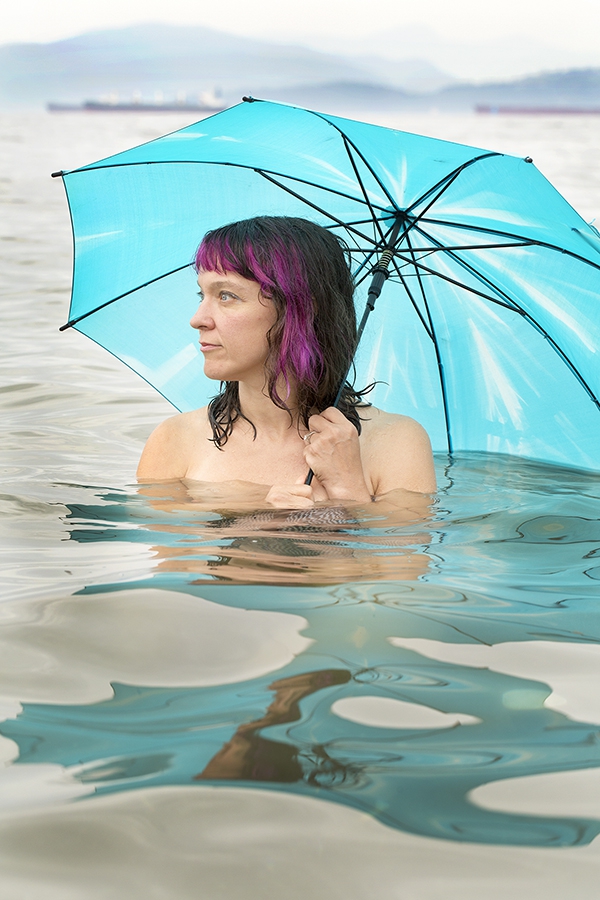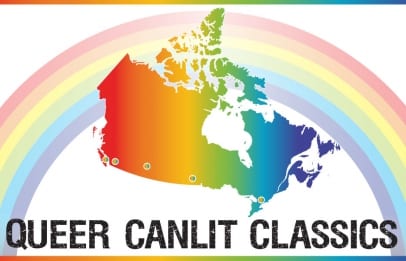
(Plenitude’s project paints a virtual map of queer CanLit hotspots. In part two, we add a few more recommendations to our queer library./Daily Xtra image)
Plenitude Magazine asked queer authors across Canada in 2014 to talk about books they’d recommend — books that inspired, influenced, or nurtured them. Daily Xtra, in partnership with Plenitude, published a first selection of the recommendations here.
For this second round of samplings from Plenitude’s The Query Project, consider a handful of answers from south-central Ontario, plus a classic from BC.
Toronto’s Vivek Shraya says Brian Francis’ Fruit is “one of the best contemporary gay coming-of-age stories,” while Tamai Kobayashi says Hiromi Goto’s Darkest Light shows unusual wisdom.
Oshawa’s Teresa Goff says Carellin Brooks’ Fresh Hell tells “stories as honest as they are hilarious.”
Brooks brings fresh eyes to one of Jane Rule’s pioneering classics, while Nancy Jo Cullen says Suzette Mayr’s The Widows paints a “funny, topical, and fearless exploration” of spry, sexually active elderly women.
And Toronto’s Kamal Al-Solaylee goes beyond Canada’s borders to credit Larry Kramer’s Faggots as an intoxicating depiction of the “heyday of gay liberation in New York of the 1970s” that profoundly shaped his personal history.

Vivek Shraya, multimedia artist
Brian Francis’ Fruit is one of best contemporary gay coming-of-age stories I’ve read. The protagonist Peter Paddington’s struggle to connect and understand his own body is painfully relatable for any teenager. As an adult, I also found Peter’s self-deprecating, honest and curious internal dialogue mirrored much of my own.
Although he is not being your typical hero, I couldn’t help but fall in love with Peter, Brian’s wit, and this book. Bonus points for it being set in Canada.

Tamai Kobayashi, author
I love young adult fiction. It is at its best when it asks the reader to go beyond the expectations of the category of young adult while embracing the limitations of the genre.
Darkest Light, the companion book to Hiromi Goto’s Half World, is a remarkable book, unusual in that the antagonist of the first book becomes the protagonist of the second (with all the complications that entails, all the moral consequences).
The fantastical elements of the work bring a sense of horror and wonder and Gee is a hero/past villain who will make you question the dichotomies of good and evil. A truly wise book.

Kamal Al-Solaylee, author
I don’t remember how I got hold of Larry Kramer’s 1978 novel Faggots in Cairo of the mid-1980s. Perhaps my friend Omar, on whom I had an embarrassing crush in my early 20s, lent it to me. He was educated in the United States of America in the late 1970s and probably sneaked it into his suitcase on his flight home. I recall how he explained the title to me: “Slang for gay.”
My formal English education at that point prepared me for reading Charles Dickens or Charlotte Brontë but not a contemporary American novel — certainly not one with what, at the time, seemed like an impossibly racy content. Its graphic opening scene introduced me to rimming; I didn’t even know that gay men (or people in general) did that sort of thing and it would be years before I saw it performed in gay porn.
Still, Kramer’s depiction of the heyday of gay liberation in New York of the 1970s was intoxicating, seductive, a siren song for a young man just coming out in the Middle East. I knew I wanted to model my future life on the principles of freedom and hedonism that Kramer had minutely detailed in the novel.
Only when I re-read it many years later in Toronto did I detect Kramer’s seething, moralizing tone. The book I read as a celebration turned out to be more like a condemnation of a sex-obsessed world.
I still struggle with that aspect of the book — and part of me prefers its tales of sexual adventures to the narrative of children and wedding bells that has come to define current gay and lesbian life — but Faggots remains the single most significant work of fiction in my personal history as a gay man.

Nancy Jo Cullen, poet and author
I love and am inspired by the work of Suzette Mayr, who received much well-deserved attention for her fourth novel, Monoceros. But each of Mayr’s novels is a funny, topical, and fearless exploration of the subject at hand.
The Widows, Mayr’s second novel, is populated by old ladies who are difficult, fully sexual, and adventurous souls determined to make it over Niagara Falls in a barrel.
Grandmother Hannelore makes out with 60-something technician Hamish in the bowels of Calgary’s Jubilee auditorium, while her sister Clotilde carries on a passionate affair with Frau Schnadelhuber. Cleopatra Maria, Hannelore’s genius (albeit confused) mixed race granddaughter, drives the women across the country toward the Falls while Mayr delivers us a saucy road story that sparkles with her wicked ability to tackle difficult issues with humour.
Mayr’s work is always a delightful and challenging read and I urge you to read all of her novels. Suzette Mayr is truly a unique voice.

Carellin Brooks, author
I recently read The Young in One Another’s Arms for the first time, a Little Sister’s Classic published by Arsenal Pulp Press. The nice thing about this edition is that it includes not only an introduction but contemporaneous reviews. You can see how the reviewers deal with author Jane Rule’s lesbianism — from the Ontarian’s opening line, “Jane Rule is a lesbian,” to the obligatory it-shouldn’t-matter denials. I wonder how our treatment of queer lit will read in 40 years or so?
I wasn’t surprised to find the novel beautifully written and a real page-turner, but I was surprised at how little lesbianism there is in it — only one off-screen relationship between two of the young women, Mavis and Gladys, in the boarding house run by the main character (and Gladys is also seeing a male lodger, Tom, at the same time). There’s a fight between Mavis and Tom the night the baby is born, also described after the fact. I suppose that was quite explicit enough for 1977!
I loved the wry gentility of the supposedly with-it and modern young people, the brisk melancholy of the one-armed proprietress Ruth, whose oft-absent husband is unsatisfactory everywhere but in bed, and the descriptions of Vancouver and Galiano Island, where the novel is set.
The baby’s homecoming on the ferry is particularly touching. It’s like a literary West Coast version of Armistead Maupin’s Tales of the City, in the best possible sense.

Teresa Goff, editor
If you want to be considered a good mother, there are things you do not admit. It is a simple equation. If you are not a good mother, the corollary is bad and if you are queer, you are already battling stereotypes. But the truths of parenthood aren’t pretty and that’s why I love Carellin Brooks’ Fresh Hell: Motherhood in Pieces. It made me laugh out loud. Okay, it actually made me snort. The writing is sharp, the stories as honest as they are hilarious.
If you have endured the first year of a baby’s life, as caregiver or confidante of one, this book says everything you may have muttered, whispered, or heard. It’s a welcome reminder that transgressive and parent can be uttered in the same breath.
(Editor’s note: This article was corrected on Nov 10, 2015 to accurately reflect author Vivek Shraya’s recommendation.)

 Why you can trust Xtra
Why you can trust Xtra


